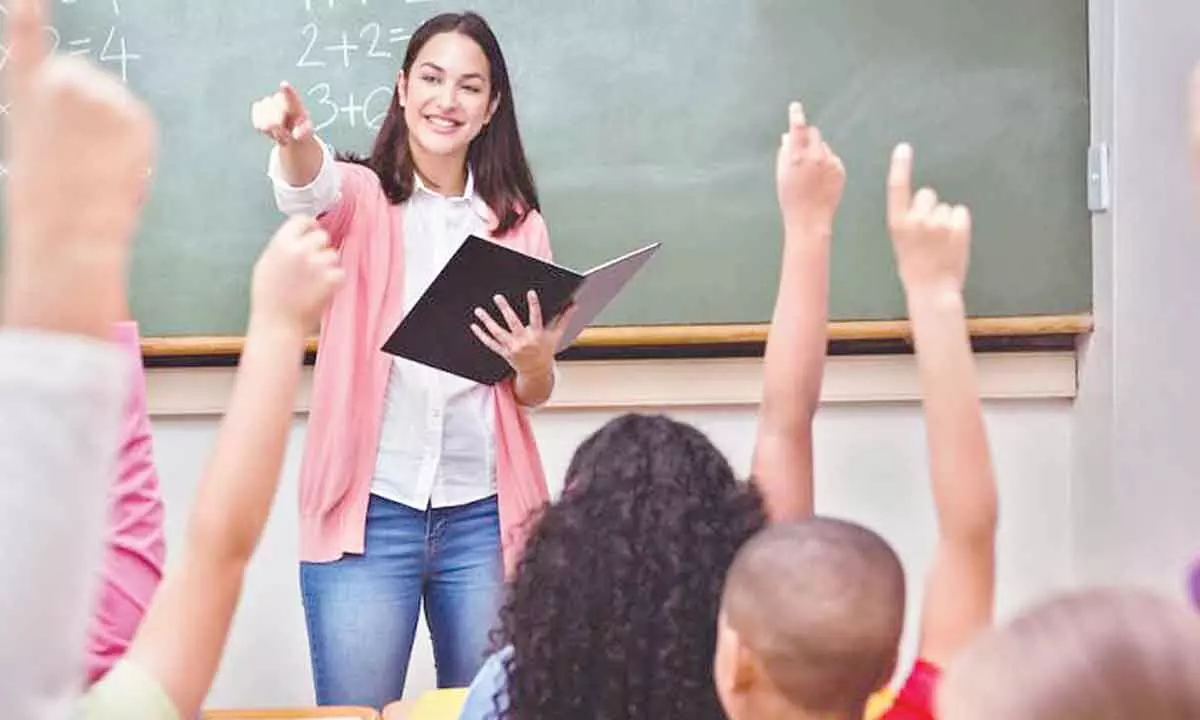Positive classroom: A foundation for a student's bright, prosperous future

A positive classroom ignites the hearts and minds of young learners, inspiring them to be active and curious learners and responsible human beings
A positive classroom is a foundation for a student's bright and prosperous future. Educators who encourage dialogues, who are non-judgemental, who support students in handling their emotions, who allow mistakes and encourage ideas, are undoubtedly creating a positive classroom out of which shall emanate confident and responsible future citizens
Students spend seven to eight hours in a school and that takes up 50 per cent of their active awake time. Thus, schools and classrooms play a vital role in building the character and mindset of students. A positive classroom ignites the hearts and minds of young learners, inspiring them to be active and curious learners and responsible human beings. A positive classroom environment is a springboard into creating character strengths that go a long way in enabling students to be confident, curious, and compassionate learners.
So, what are the features of a positive classroom?
A positive classroom allows students to...
Make mistakes
Anyone who has never made a mistake has never tried anything new - Albert Einstein
When making mistakes is seen as a stepping stone to learning, students come forward to actively engage in learning by asking questions or answering questions posed by the teacher. An educator who assures students that "it is okay to make mistakes is on his/her way to creating a positive learning environment.
Share ideas
It is okay to have some ideas that do not work than not have any ideas at all - Edward De Bono
What is important to active learning is the ability of the students to think, question, share and infer. A classroom environment that encourages students to do the above truly goes on to create young learners who can think critically and creatively.
Express and identify emotions
It takes something more than intelligence to act intelligently - Fyodor Dostoyevsky
A classroom that acknowledges the emotional needs of students goes a long way in making them emotionally literate and thus helping them understand the emotional needs of others. Facilitating students in identifying emotions that are barriers to their success is a striking feature of a positive classroom environment.
Show and receive empathy
No act of kindness, no matter how small, is ever wasted - Aesop
Children and adults thrive and grow in communities that are empathy-driven. A classroom that fosters kindness and empathy instills a sense of belongingness and safety. Feeling part of a community that is safe and caring clears the path for seamless learning. Educators could encourage acts of kindness within the classroom and promote collaborative learning.
Be accepted for who they are
It is easy to judge; it is more difficult to understand- Anonymous
Educators, who provide space for students to be who they are, are creating positive classrooms. When students are part of an environment that does not judge them for who they are, they tend to feel safe and secure. This positive space sparks self-confidence in students which in turn drives them to realise their true potential. Further, educators who are non-judgemental in their approach to student behaviour have more chances of reforming delinquent behaviour. Your language violates the acceptable norms of the school as opposed to you are a spoiled brat – Which one is the language of a positive classroom?
A positive classroom is a foundation for a student's bright and prosperous future. Educators who encourage dialogues, who are non-judgemental, who support students in handling their emotions, who allow mistakes and encourage ideas, are undoubtedly creating a positive classroom out of which shall emanate confident and responsible future citizens.
(The author is the Academic Coordinator, Ekya School, JP Nagar)


















